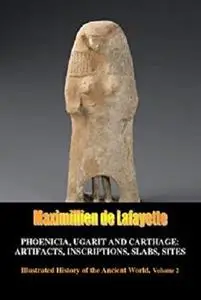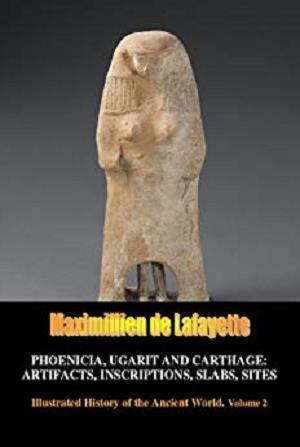Phoenicia, Ugarit, and Carthage: Artifacts, Inscriptions, Slabs, Sites. Volume 2 (Illustrated History of the Ancient World and Sacred Places) by Maximillien de Lafayette
English | June 16, 2011 | ASIN: B0056HOWUQ | 140 pages | AZW3 | 5.55 MB
English | June 16, 2011 | ASIN: B0056HOWUQ | 140 pages | AZW3 | 5.55 MB
Phoenicia, Ugarit, and Carthage: Artifacts, Inscriptions, Slabs, Sites. Volume 2
Series: Illustrated History of the Ancient World and Sacred Places
A set of 2 Volumes in Kindle Edition.
These two volumes are also available in paperback as one large volume at lulu.com
Volume Two: A beautiful book, well conceived and lavishly printed, reflecting the beauty and importance of the art of Phoenicia, Ugarit and Carthage throughout the centuries from day one till the end of the civilization of theses great countries/cities. It is abundant with historical stories, mythological tales, explanation of the most important aspects and facets of their culture, social systems, religion, creativity and breathtaking monuments. The book includes endless illustrations and photos of the whole cultural, social, historical, religious and artistic spectrum of these great civilizations, such as to name a few:
Jewelry, rings, bracelets, and ornaments
Royal tombs and sarcophaguses
Ugaritic furniture
Tablets and translation of inscriptions
Steles and monuments of gods and goddesses
Byblos script, and Ugaritic cuneiform inscriptions
The Phoenician alphabet
Harbors and ships
Statues and figurines
Castles and fortresses
Ancient cities and their ruins
Early Crusaders’ churches, castles and forts in Phoenicia
Phoenicia and Phoenicians as mentioned in the Bible
Phoenicia at the time of the Greek, Roman, Crusaders, Arabs and Ottoman occupations
Phoenician Gods and goddesses, and how their pantheon shaped the origin, aspect and creation of Judaism and other religions
Baalbeck: The Anunnaki’s mega city on Earth
Baalbeck; the city of gods, Biblical figures, and the Djinns (Jinn)
Swastika sign and mystical inscriptions on one of the Jupiter Temple’s column in Baalbeck, linking the builders of the temple/early inhabitants of Baalbeck to the esoteric masters of Tibet, and the extraterrestrial gods of India (Hindu and Buddhism)
Gilgamesh, Al Arz, Baalbeck and immortality
The holy site of the early Anunnaki where Gilgamesh sought immortality
The Cedar Forest, where Gilgamesh spent a few days imploring the Anunnaki gods, to grant him immortality
The mystery of Hajarat Al Houblah in Baalbeck
Maximillien de Lafayette's books are available in 2 formats:
1-Amazon Kindle edition at www.amazon.com
2-In paperback at www.lulu.com
http://stores.lulu.com/maximilliendelafayette
Author's website:
www.maximilliendelafayettebibliography.com
About the Author:
Maximillien de Lafayette wrote more than 1,200 books and numerous encyclopedias; 800 books and 9 encyclopedias are published. He has been writing for the past 50 years.
He is considered as one of the world leading linguists (Ancient Languages) and historians of ancient civilizations. In addition, he wrote 14 dictionaries of various languages, to name a few: Sumerian, Akkadian, Assyrian, Aramaic, Latin, French, Hittite, Phoenician, Ugaritic, Greek, etc. He is an expert linguist in 26 languages (Ancient and modern).
In 2004, as an expert linguist and jurist, Maximillien de Lafayette was commissioned by Yale University, School of Law (New Haven, Connecticut) to translate from English to Arabic, The White House Draft of the New Constitution of Iraq, and which was submitted to the Iraqi Council, then the governing body of Iraq. De Lafayette is internationally known for his expertise in the history and languages of ancient civilizations, and social-legal studies of the Near East and the Middle East, with a strong emphasis on tribal dialects, comparative social systems and laws, and Islam.
De Lafayette is the first and only scholar/historian/linguist in the eastern and western hemispheres who wrote a book on the
"Description, Translation, and Explanation of Babylonian, Sumerian, Akkadian, Assyrian, Ugaritic,and Phoenician Cylinder Seals, Slabs, Inscriptions"



